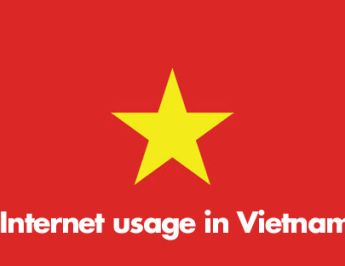
The report brings an overview of the internet market in Vietnam include with the latest figures and trends you need to understand. Read our analytics in the article below or free download the full report.
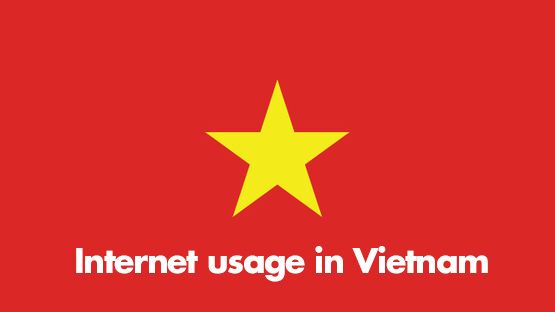
According to data from the Statista report, as of early 2021, Vietnam had 68.72 million Internet users, accounting for 70.3% of the population. The Internet plays an increasingly important role in life, especially during social distancing and the strong digital transformation trend. The Internet usage in Vietnam report from Statista helps us understand the internet market in Vietnam and what businesses need to prepare to meet market demand and maximize revenue. Read our analytics in the article below or free download the full report.
As of Jan 2021, Vietnam was ranked 6th in Internet users compared to Asia Pacific regions, with a number of users more than 68 million people (accounting for more than 70% of the population), behind China (939 million users), India (624 million people), Indonesia (202 million people), Japan (117 million people), Philippines (73 million people). The number of internet users in Vietnam was forecast to increase to more than 82 million users in 2025, equally an increase of 19.7% compared to 2021.

According to the report, the mobile internet users in Vietnam reached 71.54 million people in 2021, accounting for 98.6% of the country's total internet users, and predicted to increase for the next coming years.
Almost all of Vietnam's internet users access the Internet via laptops and PCs, accounting for 68% of the country's total Internet users. The internet users' access via mobile devices accounted for 40.1%, and tablet devices accounted for 1.9%.

On average, 31% of Vietnamese people spend from 3 to 5 hours accessing the Internet, 28% of users spend 5 to 7 hours daily, 17% spend less than 3 hours, and 9% spend more than 9 hours online per day. The leading internet activities of Vietnamese internet users when they are online are mainly reading newspapers (accounting for 63% of the respondents), Streaming movies or music, searching for information, and shopping online activities accounting for 43% of the share of respondents, etc.
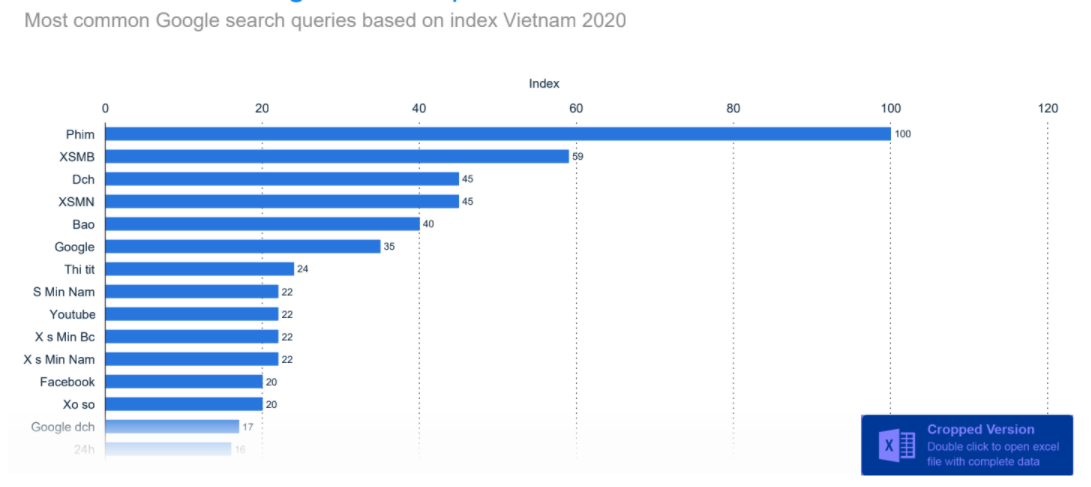
Vietnamese internet users spend a lot of time online for leisure activities more than usual in the context of a pandemic and the application of social distancing measures. Specifically, movies, lottery, newspapers, etc., are the most common Google search queries based on an index in Vietnam in 2020. Besides, "movies," "comics," "newspapers," eCommerce sites (Shopee, Facebook, Tiki, Lazada, etc. is the most -visited websites based on the number of pages per visit in Vietnam 2020.
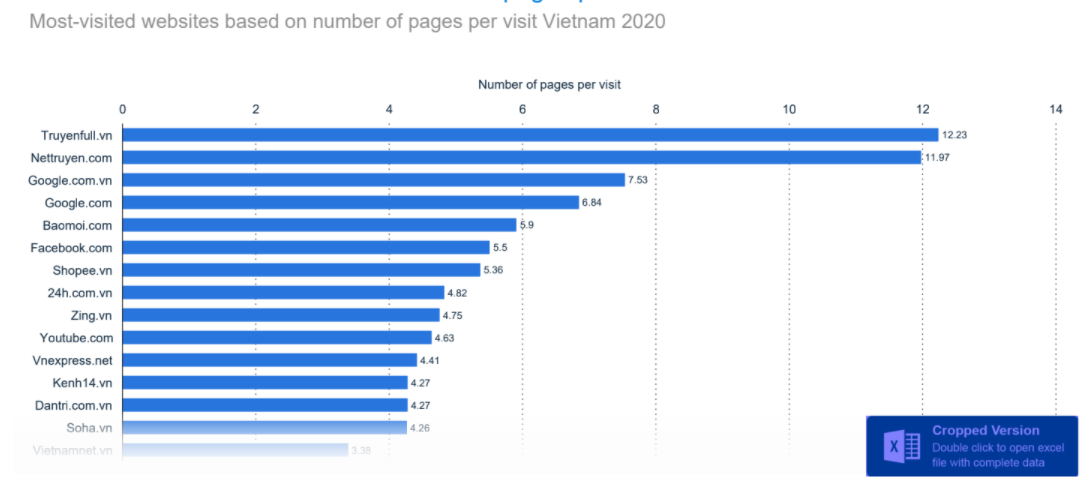
Up to now, Google is still the most popular web browser in Vietnam that is rated as a fast, simple, highly secure web browser. With the number of users rising sharply from 2011 to 2013, the proportion of Google users dropped significantly in 2014 - 2015 was explained by the birth of the Coc Coc browser - a browser developed separately for Vietnamese people. However, Google users began to overgrow, accounting for 66.72% of Internet-browsing users in Vietnam in 2020.

Accounting for a 13.18% share of browser marketing across Vietnam behind Google, Coc Coc is the 2nd most popular search engine in Vietnam. Coc Coc is a web browser developed by Vietnamese people officially announced in April 2013, with built-in features to automatically access Facebook, download videos from Youtube, Zing, improve download speed, and support the English language.
Safari is a browser developed by Apple dedicated to the 3rd popular Mac OS operating system in Vietnam, after Google and Coc Coc. Statista's data show that Safari browser users increased sharply from 2011 to 2016 before declining in 2019.

More than security, Firefox also has a simple interface, is easy to access, has fast performance, and is rich in features. Firefox is an open-source web browser popularized in Vietnam since 2008 but started to capture a considerable user market share in Vietnam from 2010 to 2011. In 2011, this browser received more than 38% market share before falling to 2.6% market share in 2020.
The Opera web browser was released in 1995 due to a research project by a Norwegian telecommunications company. Opera has many outstanding features, but one of the most outstanding features is Opera's battery-saving technology. Opera browser occupied a high market share around 2011 to 2013 before falling in the following years.

Statista's forecast shows that the number of social network users in Vietnam has grown steadily from 2017 to 2025, with an average growth rate of about 7.01% per year. From 47.65 million users in 2011, Vietnam was predicted to reach more than 81 million social media users in 2025.
The most popular social media platform in Vietnam is Facebook, accounting for 95% of respondents. The following platforms include: Zalo (86%), Youtube (80%), Instagram (43%), Tiktok (37%), Pinterest (19%), Twitter (17%), Linkedin (6%), Gapo (3%), Lotus (2%).
Released by VNG in 2012, this "Made in Vietnam" social network has more than 100 million users worldwide (mainly from Vietnam, USA, Myanmar, Japan, Korea, Taiwan...). Zalo was initially a free messaging and calling application but gradually became a social network with many sharing features.
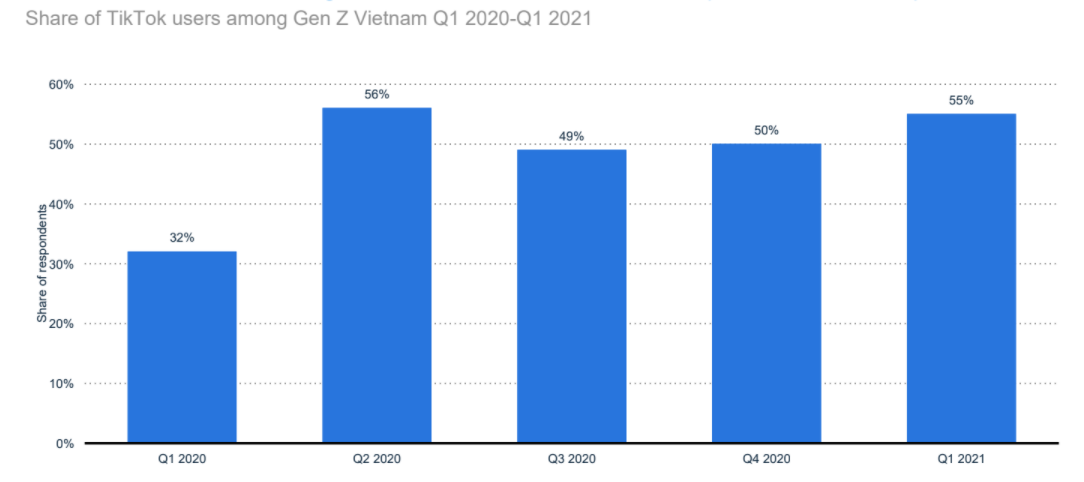
With 1.5 billion users, Tik Tok has become a new trend worldwide and fastly become the fastest growing social network in Vietnam. In 2019, Tiktok in Vietnam reached 12 million subscribers, mainly from Gen Z. 66% of TikTok users are under 30 years old (41% are 16 to 24 years old).
By the end of 2020, Vietnam's e-commerce grew by 18% with a scale of 11.8 billion USD, 14-15 billion USD lower than the previous forecast. However, this is still the highest increase in the region during the COVID-19 epidemic. Vietnam is also the only country in Southeast Asia with double-digit e-commerce growth.

COVID-19 is a significant blow to e-commerce that many businesses that have never been online joined the digital market. Many people who have never purchased online change their habit of buying online.
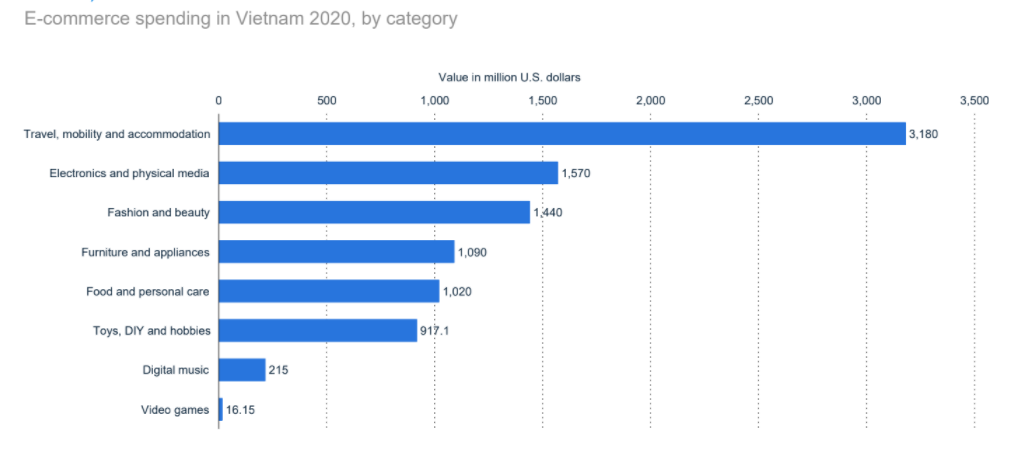
With the effective control of epidemics in 2020, the travel industry, Mobility, and Accommodation still accounted for the most significant consumer proportion of Ecommerce in 2020 in Vietnam, reaching 3,180 Million US Dollars. Electronics and Physical Media reached 1,570 Million US Dollars, Fashion, and Beauty (1,440 Million US Dollars); Furniture and Appliances (1,090 Million US Dollars); Food and Personal Care (1,020 Million US Dollars), etc.
Shopee VN is the leading international B2C e-commerce site in Vietnam in the first quarter of 2021, followed by Lazada, Yes24, SHEIN. The Gioi Di Dong is the most popular domestic B2C e-commerce site in Vietnam with more than 29 million web visitors per month, follow are Tiki (19.02 million visitors/month); Dien May Xanh (16.61 millions visitors/month); Sendo (8.14 million visitors/month); FPT Shop (5.44 million visitors/month); CellphoneS (5.42 million visitors/month); Dien May Cho Lon ( 5.31 million visitors/month); Bach Hoa Xanh (4.21 million visitors/month); Hoang Ha Mobile (4.17 million visitors/month); Meta ( 2.77 million visitors/month). The most popular B2C e-commerce sites belong to the Electronics and physical media sector.
Digital payment - the new trend of cashless payment was widely developed in Vietnam, contributing to promoting the social economy quickly by offering synchronous solutions to ensure safety and security, reasonable cost, and bring convenience and ease to users. According to the data, Vietnam's digital payment transaction value increased strongly from 2017 to 2025. In 2017 the transaction value in digital commerce reached 6,775 million US dollars; this number in 2025 will be 22,056 million US dollars.

In 2020, Vietnam will have 45.6 million digital payment users and 70.9 million users in 2025.
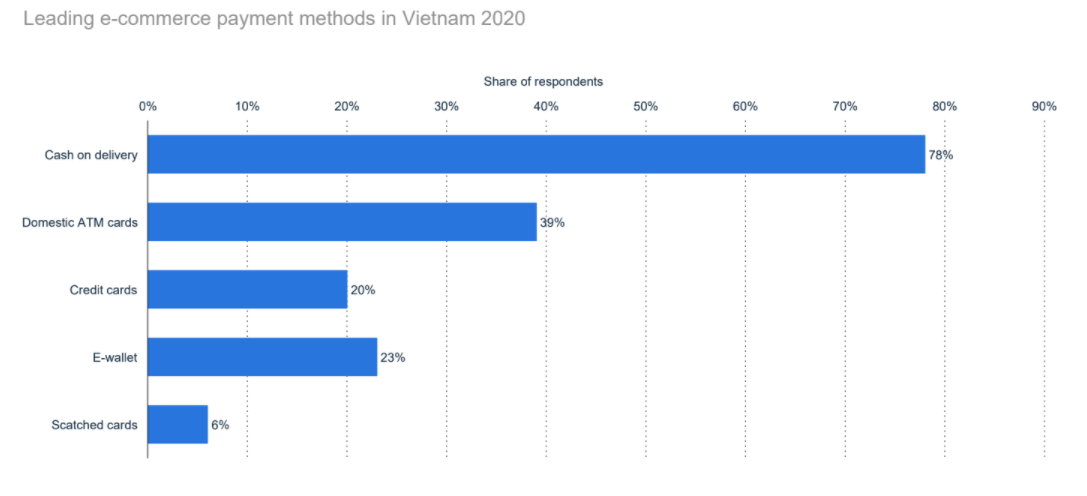
Cash on delivery is the most popular e-commerce payment method in Vietnam 2020, accounting for 78% of respondents. Following are Domestic ATM cards (39%), Credit cards (20%); E-wallet (23%); Scratched cards (6%).
The Internet usage in Vietnam report from Statista brings a lot of information about the Internet development that impacts many aspects of economic and social life. Besides, the impact of the pandemic forced businesses online to survive. Find more information about internet transformation and data about Vietnamese internet users in the report.